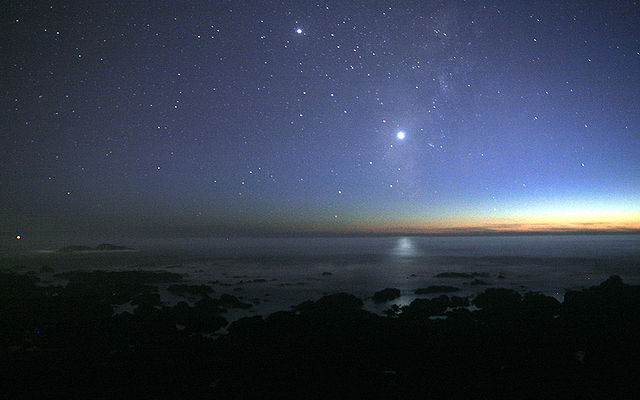EnVision is an orbital mission to Venus being developed by the European Space Agency (ESA) that is planned to perform high-resolution radar mapping and atmospheric studies. EnVision is designed to help scientists understand the relationships between its geological activity and the atmosphere, and it would investigate why Venus and Earth took such different evolutionary paths. The probe was selected as the fifth medium mission (M5) of ESA's Cosmic Vision programme in June 2021, with launch planned for 2031. The mission will be conducted in collaboration with NASA, with the potential sharing of responsibilities currently under assessment.
Rendering of the EnVision spacecraft around Venus with SRS, VenSAR feeder and reflectarray antennas deployed. Credit ESA / NASA / Paris Observatory / VR2Planets.
Observations and explorations of Venus
Observations of the planet Venus include those in antiquity, telescopic observations, and from visiting spacecraft. Spacecraft have performed various flybys, orbits, and landings on Venus, including balloon probes that floated in the atmosphere of Venus. Study of the planet is aided by its relatively close proximity to the Earth, compared to other planets, but the surface of Venus is obscured by an atmosphere opaque to visible light.
Venus in real colors, processed from clear and blue filtered Mariner 10 images.
Venus is always brighter than the brightest stars outside the Solar System, as can be seen here over the Pacific Ocean
Phases of Venus and evolution of its apparent diameter
The Pre-Columbian Mayan Dresden Codex, which calculates appearances of Venus.





